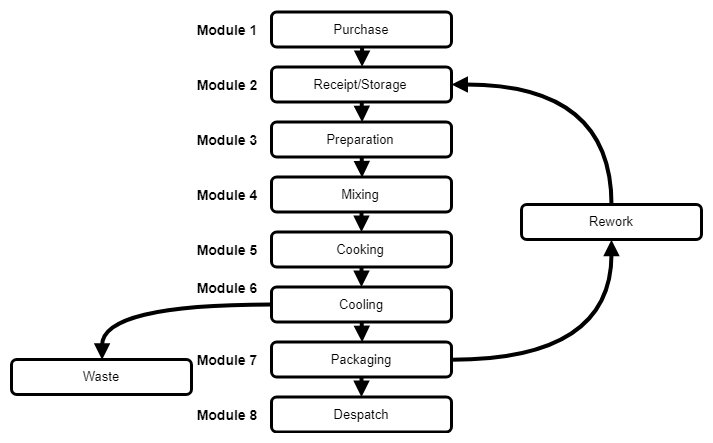

#Haccp process 3 complex food prep how to
Related: How to become a health and safety inspector in 6 steps Why is a HACCP plan important? The application of monitoring and control in any of these steps reduces the risk of a hazard developing. They include cooking, freezing, heating and cleaning. These are the steps during food handling where staff can take action to reduce or prevent a food safety hazard. The plan addresses how to prevent and control these hazards. Hazards can be chemical, physical or microbiological. A hazard analysisĪ hazard analysis identifies and evaluates food safety risks which might be present while people handle the food. HACCP plans comprise of the following: 1. Many countries use HACCP plans as part of their food safety strategies and legislation, which applies to all stages of food production and processing, from harvesting and storing food to preparing, packaging and distributing it. NASA and US food company Pillsbury originally devised these systematic, preventive steps that they used to ensure the safety of food for space expeditions. Related: What are hygiene factors in the workplace? (With definition) What are hazard analysis and critical control points? Identifying critical control points (CCPs)Įstablishing critical limits for each CCPĮstablishing monitoring requirements of each CCPĮstablishing procedures to ensure that HACCP plans work competently The food safety plan follows seven core principles of a HACCP plan, which, together, are the general principles of food hygiene: Related: What does a food preparer do? (Including skills and duties) Principles of HACCP

The designated responsible person within a food business authors the plan, setting out the critical elements in HACCP in a consecutive flow that the staff can easily follow. The plan outlines how food businesses mitigate the risk of food poisoning by identifying and managing the chemical, physical and biological hazards that could affect the food the employees prepare. What is a HACCP plan?Ī HACCP plan is a management plan for food safety that uses hazard analysis and critical control points as a framework. In this article, we explain what a HACCP plan in food safety is, and how employees use it to manage food safety. Understanding what this plan is is essential if you work in a food-related business. It's mandatory for businesses that process, prepare and handle foods to produce a HACCP plan outlining actions to ensure they don't expose people to food poisoning risks. Maintain food temperature controls e.g.Hazard analysis and critical control points (HACCP) is an approach to food safety that prevents physical, chemical and biological hazards from contaminating or spoiling food.Take measures to avoid cross contamination e.g.Remind staff of the importance of personal hygiene.Know their suppliers and check all supplies on delivery.Ensure staff are familiar with these and follow the procedures.The plan must be kept up to date and reviewed especially when something changes. Keep records of all of the above (documentation).Prove that the plan is working (verification).Decide what to do if something goes wrong (corrective action) and re-write the plan to avoid further problems occurring.Set up checks at CCP to prevent problems (monitoring).Set critical limits at each CCP which will state the conditions that must be met to ensure food is safe to eat.Identify what could go wrong (hazards and critical control points (CCP)) for each dish and review if any change is made to a recipe or a new dish is introduced.The HACCP process involves the following steps: It is a flow diagram that clearly sets out the relevant steps. The aim of this process is to look at how food is handled and introduce procedures that will ensure that the food is safe to eat.įood producers need to understand how, why and where food could become contaminated and then put strategies in place to help reduce the risk of contamination occurring. Hazard Analysis and Critical Control Points (HACCP)įood hygiene laws state that all business should have a documented HACCP system in place.


 0 kommentar(er)
0 kommentar(er)
